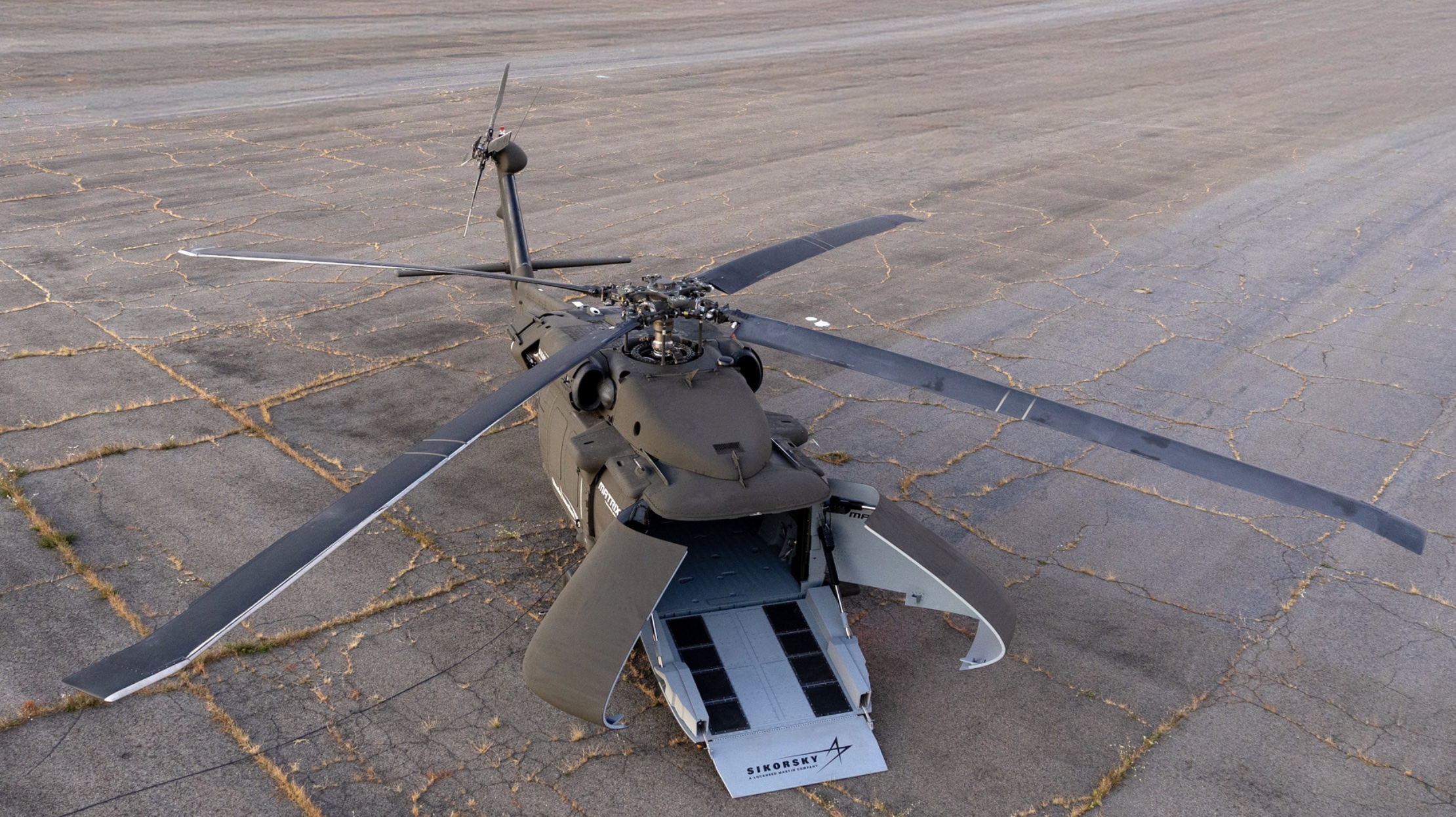Executive Briefing: U-Hawk Autonomous Black Hawk Conversion

Sikorsky S-70UAS U-Hawk helicopter - the first fully autonomous Black Hawk helicopter
Source Article:
Sikorsky Converts BLACK HAWK® into U-Hawk™, A Battle-Ready Autonomous UASLockheed Martin Corporation • Oct 13, 2025

Guy Breier
CEO, Boston Manufacturing Group • Oct 20, 2025
Overview
Sikorsky, a Lockheed Martin company, has unveiled the U-Hawk (S-70UAS), a fully autonomous variant of the UH-60L Black Hawk helicopter. The transformation from manned to unmanned aircraft was completed in just ten months, signaling a major leap in aerospace innovation. By removing the cockpit and integrating advanced autonomy systems, Sikorsky is redefining how legacy military platforms can be repurposed for next-generation missions.
1. Manufacturing Implications
Platform Conversion vs. New Production
- Converting existing UH-60L Black Hawks into U-Hawks leverages an extensive installed base, avoiding the cost and time of building new airframes.
- Structural modifications—removal of the cockpit, rerouting control systems, and adding a ramp for payload handling—require precise engineering and revalidation of load paths, balance, and vibration integrity.
- A modular retrofit kit approach can enable scalable conversion across multiple depots, streamlining manufacturing and logistics.
Digital Integration and Autonomy Assembly
- The U-Hawk integrates MATRIX™ autonomy and a new fly-by-wire control system. Manufacturing now involves avionics integration and software configuration as key production steps.
- Digital twins and model-based design enable virtual validation, reducing prototyping time and cost.
Supply Chain and Sustainment
- Retaining core UH-60 components preserves supply chain continuity and simplifies sustainment.
- However, the addition of autonomy and AI modules introduces new suppliers, necessitating rigorous software certification, cybersecurity validation, and supplier qualification under aerospace standards.
2. Operations Implications
Agile Development
- The ten-month turnaround highlights Sikorsky's use of concurrent engineering and rapid prototyping, marking a shift toward lean, agile defense manufacturing models.
Fleet Utilization
- Converting aging airframes into autonomous utility aircraft maximizes asset value and lifecycle efficiency.
- Maintenance teams benefit from existing UH-60 familiarity, though new training will be required for autonomy diagnostics and software maintenance.
Deployment Flexibility
- The removal of crew space enables longer cargo loads, drone deployment, and unmanned ground vehicle (UGV) transport.
- Mixed fleets of crewed and uncrewed aircraft will require new ground safety protocols and integrated command systems.
3. Quality and Certification Implications
Airworthiness and Safety
- Converting from a manned helicopter to an autonomous system demands a new certification pathway, balancing legacy platform safety standards with emerging UAS regulations.
- Redundancy, fail-safe control logic, and mission assurance testing are critical quality focal points.
Configuration and Traceability
- Each retrofit must maintain serialized traceability given variations in aircraft history and structure.
- Software version control, cybersecurity, and configuration management are integral to quality assurance.
Reliability and Testing
- Continuous telemetry, flight data analytics, and AI-driven predictive maintenance will underpin quality improvement and lifecycle management.
4. Strategic Takeaways
- 🚀Accelerated Innovation:
The U-Hawk demonstrates that legacy aerospace platforms can be digitally re-engineered into intelligent, autonomous systems on rapid timelines.
- ⚙️Operational Excellence:
The program embodies lean manufacturing principles, agile development, and digital validation.
- ✓Quality Evolution:
Future aerospace QA must merge traditional AS9100 frameworks with AI-driven validation and cybersecurity assurance.
- 🏭Industrial Implication:
This initiative sets a precedent for transforming legacy fleets across aviation and defense through modular retrofits and software-defined upgrades.
Disclaimer
This briefing is based on publicly available information from Lockheed Martin, Sikorsky, and reputable defense industry sources as of October 2025. Some data points—including performance metrics, cargo capacity percentages, and manufacturing details—represent projections, preliminary reports, or analytical interpretations rather than confirmed production facts. Readers should treat this document as an informed analysis, not an official or certified technical statement.